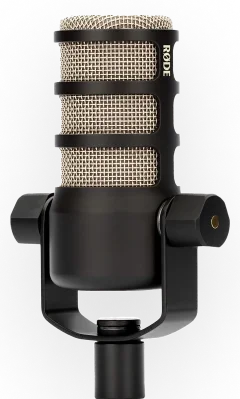London’s calling! The Sounds Profitable Business Leaders Summit is coming to The Podcast Show London. Partners of Sounds Profitable are invited to join us on Tuesday, May 23rd. For more information, get in touch to learn more!
Edison Research put out one of their weekly insights posts with some data pulled from Edison Podcast Metrics (EPM) about the “batting average” of various genres in podcasting. Whatever the intent of this post, the headline (“Want a hit podcast? Swing for the fences with True Crime”) and how it has subsequently been reported (“…true crime is most likely to be a hit podcast”) have the potential to lead podcasters astray, and this is a thing I do not want. So this week, I thought I’d break this data down a little bit and provide some context that will hopefully lead you to better decisions, which is part of our mission at Sounds Profitable.
The core of this insight was an analysis of the number of podcasts in each genre that cracked the top 200 shows in EPM, divided by the total number of shows in each genre that are tracked by the service. The quotient of this simple math was something Edison calls the “batting average” for each genre, expressed as the percentage of shows tracked per genre that make the top podcast list.
The results of this analysis showed that 3.8% of the True Crime podcasts tracked by EPM made the top 200, a full percentage point higher than the genre with the second-best “batting average,” Comedy. Now, here’s what I think is undeniably true based on this data: as far as EPM is concerned, True Crime podcasts do indeed punch above their weight class. That the genre is popular is not something that you need a calculator for. Edison’s data shows that it is third in terms of total shows in the top 200, and True Crime has reliably been a top five genre in podcasting since EPM began in 2019. It’s especially strong with women – Safe and Sound, our study from Q4 2022, showed that it was the number three genre overall, and number one with women. Starting a True Crime podcast, as the data suggests, is probably a pretty good idea, given how popular the genre is.
I don’t have an issue with anyone looking at this data and telling themselves, wow…true crime is really popular. That data is reliable and stable quarter to quarter. I do have an issue with making the leap from that to saying that true crime is “the most likely genre to succeed”, a supposition I find fairly dangerous and unsupported by the design of EPM. The other side of making this leap is looking at the shows with the lowest batting average, and seeing that as a disincentive to produce content in those genres. TV and Film, for instance, is represented as having a batting average of .2%, or about 20 times worse than that of True Crime. So much for my Night Agent fan podcast.
And it’s here that, as a recovering former fantasy baseball addict, I think it’s worth saying a word or two about batting average.
This Won’t Take Long, Non-Sports Fans
The highest batting average in Major League Baseball belongs to Tyrus Raymond Cobb, who finished his career at a cool .366 (that’s like a hundred times more successful than True Crime. He really murdered that ball!) Cobb maintained that average over a total of 13,103 plate appearances. Last week, on April Fool’s Day, Milwaukee’s Joey Wiemer made his major league debut, hitting .500 against the Chicago Cubs. Now, Wiemer may end up being a quality baseball player for many years, but no one would suggest that his .500 (he was at bat two times) is better than Cobb’s .366, because his sample size is minuscule compared to Cobb’s oeuvre. To truly understand the import of a batting average, it isn’t enough to know the average. You have to know the number of successes AND failures – the size of the total universe.
EPM doesn’t give you this directly, but it’s all there for you to calculate should you so choose. At the top of Edison’s batting average graph, True Crime bats .038, placing 27 shows in the top 200. My handy dandy abacus tells me that this means EPM tracks about 700 true crime shows. For comparison, Apple Podcasts indexes about 2,500,000 shows, and Podcast Index clears over 4,000,000. 700 is…not a lot. In the grand scale of the totality of the podcasting space, extrapolating podcast behavior (not human behavior) from a small sample of the most extreme outliers would be like a batting coach telling you to do whatever Joey Weimer does, because he went 1-2 on his debut.
To put this into podcasting terms, deducing that My Favorite Murder and Crime Junkies are Very Good Podcasts because they are reliably in the top five or ten shows in EPM is a solid deduction. But extrapolating that to a statement like “true crime shows are more likely to succeed” is putting a lot of your season on Joey Wiemer.
Like Soylent Green, It’s People
It is worth talking about what well-constructed consumer surveys like EPM are good at measuring, and what they are not designed to measure. The sample universe of survey research is people – weekly podcast listeners. They are very good at this because they typically use a large sample of listeners and also because they draw from the entire universe of listeners: old and young, recent converts and veterans, podcast junkies and Rogan-onlies alike. Because surveys like EPM sample from the entire pool of listeners, every time you drop a claw into the Chuck-E-Cheese magical stuffed animal claw game, you get a beast that looks roughly the same, every time. That’s the magic of proper survey research, and done correctly, it works 90% of the time, every time – significantly better than Sex Panther.

That’s why I tend to look at any measure that comes out of EPM regarding the behavior of humans as credible. I’ve been under the hood with this data for years, and I know it doesn’t jump around a lot from quarter to quarter. It’s stable and reliable. So when EPM tells you that X% of podcast listeners enjoy True Crime, I treat that as about as good an estimate as you are going to get. I, mean, I did help to design EPM and worked on it for years with the current team to hone the product and make it as accurate and reliable as possible. I believe that what it was designed to do – measure humans – it does and continues to do very well.
Here’s what it doesn’t measure: podcasts. This is a not-so-subtle distinction that I want to cement in your minds when you think about any form of research data. The study is completely transparent about this – it’s right there below the graph: batting average is the number of shows in each genre that make the top 200 divided by the number of shows in that genre that make the top 20,000. These aren’t arbitrary numbers – they are the limits of the EPM dataset, because EPM doesn’t measure podcasts – it measures people, and the most popular podcasts according to what those people say they listen to. This makes it very good, at the current sample size, at telling you a fair amount about the top 200 podcasts, which are fairly stable, but very little about podcasts 201-20,000 and nothing about podcasts 20,001 to 4,041,596, which represent 99.99% of available podcasts (and yes, of course I did the math.)
This means that the great Chuck-E-Cheese claw machine of this survey only grabs shows that are reliably in the top .01% of shows. To say these shows are outliers is a whopper of an understatement, given the decidedly non-normal distribution of podcast listening. The individual shows that make up the top 200 or even 20,000 look nothing like the shows in the rest of the podcast universe in the way that Giannis Antetokounmpo looks like no one in my neighborhood pick-up game.
Why I Made This Into A Whole Thing
Let’s get back to why this got me exercised in the first place, and it wasn’t to cast EPM in any kind of disparaging light (again, I helped to build it, and I know what it is really good at). I want you to make better decisions with your podcasts. If you look at this batting average list and intuit, without guidance, that it’s useless for you to make a podcast about 1980s TV sitcoms because the “batting average” for that genre is so low, then this list has done you and Alf fans everywhere a tremendous disservice. So I want you to remember three key things next time you see data like this:
Past Performance is not predictive, especially in an immature market
This is especially true in podcasting, a medium that fully two-thirds of the country has not made a part of their weekly media consumption. When you look at that part of the country, you know what has a heck of a lot better batting average than true crime? Fictional crime. Anything that ends in “…and Order,” “CIS,” “CSI,” or starts with “Chicago” is a heck of a lot more successful than nearly any podcast you can think of. What got podcasting here won’t get us there, and what has or hasn’t been successful to date is less relevant to future success than you might think. Ask anyone who bought Crypto a year ago.
There is room for your podcast, regardless of genre
Making existential decisions about the genre of your podcast based on the current universe relies on a scarcity mentality – one that assumes we are at peak podcasting, and that gaming the system or other forms of arbitrage are a necessary part of the success equation. Nothing could be further from the truth. For more on that, read my friend Eric Nuzum’s take on the myth of market saturation in podcasting. I have nothing further to add to his take – as Randy Jackson often said on American Idol, he done sung it, dog.
OK, maybe just one more thing, from Stephen Sondheim in Sunday In The Park With George, which every podcaster should see in their lifetime: anything you do, let it come from you. Then it will be new.
Don’t ignore the denominator
One last comment about the True Crime stats from Edison’s batting average chart. The number of shows from the genre in the top 200 is fairly high – 27. That’s the numerator. But the denominator (what EPM tracks) is 700, and that is not a very high number. One of these two things must be true, and both are worth keeping in mind for the creator:
- That 700 is wildly smaller than the actual universe of true crime shows, which throws this “batting average” calculation even more into doubt.
- That 700 is not that much smaller than the actual universe, which means that there really aren’t that many attempts at True Crime.
I asked my friend Dan Misener from Bumper, He Who Knows These Things, to give me the total number of True Crime shows currently in Apple Podcasts. I’ll leave the public sharing of such data to him, but I can tell you that while it is certainly a lot more than 700, it wasn’t as high as I thought it would be (Society and Culture, for example, has about 13 times more shows in the Apple Directory).
Some of that is an artifact of the Apple taxonomy, which I think any of us who have been in podcasting for a decent length of time would agree is not as granular or satisfying as it could be. There are a lot of shows in Society and Culture, for example, that a listener would actually perceive as True Crime. But to close out this article by throttling the last ounce of life out of baseball analogies, a True Crime podcast is a particularly difficult fastball to hit. Here is what you need to produce a podcast about sports:
- Mouth
Here is what you need to produce a True Crime podcast
- Narrative Chops
- Editing Chops
- Sound Design Chops
- Research Chops
- AN ACTUAL MURDER
It’s really hard to make a good True Crime podcast, which is why there aren’t even that many attempts – surely a more salient aspect of the genre’s “high batting average”.
So, a couple of final thoughts about all of this:
- Make sure that research about a thing actually measures that thing, and not some other thing
- Make a podcast that makes you happy regardless of genre
- Make it better every day.
- Don’t murder anyone to make a podcast
- Or for other reasons. Try not to murder, period. Looks bad.
Wrapping Up
Sounds Profitable is committed to lifting the entire podcast industry up, every single day, so that podcasters can build careers, companies can be founded, and great art can be created in this medium we all love so much. Part of that is understanding the data we have access to, holding the industry accountable to higher standards in reporting that data, and providing as much context as we can to you about how to use that data to your advantage.
We have some exciting initiatives currently in development to elevate the quality and quantity of useful data podcasters have access to, which we will be talking about in this space very soon, but until then, why not subscribe to our weekly short video series, Data Decoded? Each week I will break down one new piece of data in the podcast space (with the help of some incredible editing work by our own Gavin Gaddis) and how you can use it to level up your company or your own personal workflow. I hate being on camera, so don’t make me do this for nothing, people!
Thanks again for the gift of your time and attention. If you found this useful, be sure and subscribe to Sounds Profitable if you haven’t already, forward this to a friend or colleague, and don’t forget our FLEET of podcasts, available in your podcast client of choice.
New Partners
Sounds Profitable exists thanks to the continued support of our amazing partners. Monthly consulting, free tickets to our quarterly events, partner-only webinars, and access to our 500+ person slack channel are all benefits of partnering Sounds Profitable.
- Established in 2003, Voice123 is the world's first online marketplace for voice overs. Since then, it has grown to become a truly accessible global network for audio creators by providing the tools, resources, and support needed to succeed in a global market. At Voice123, voice actors and clients can speak for themselves and have their voices heard!
Want to learn more about partnership? Hit reply or send us an email!














































































































































































































